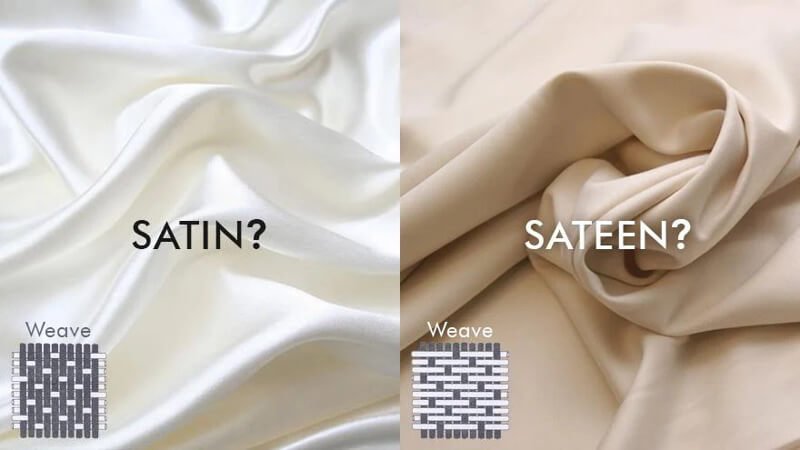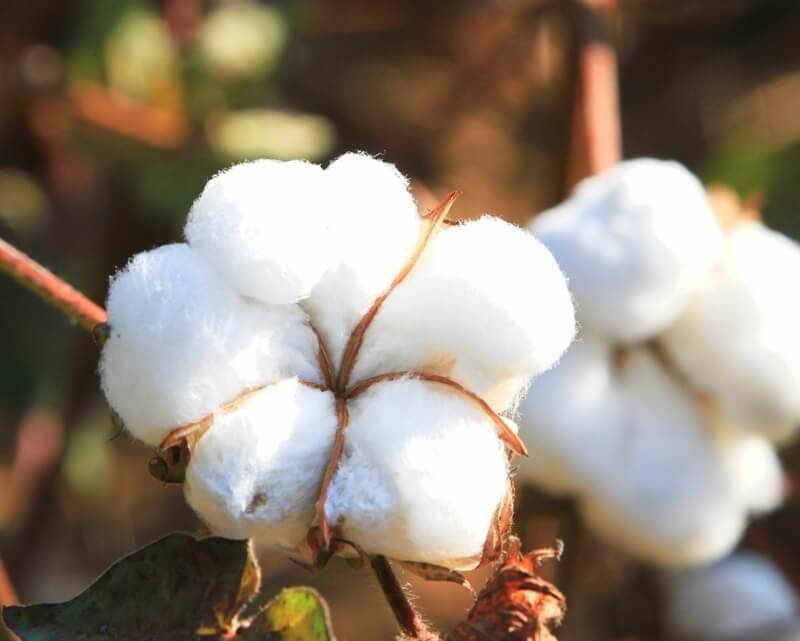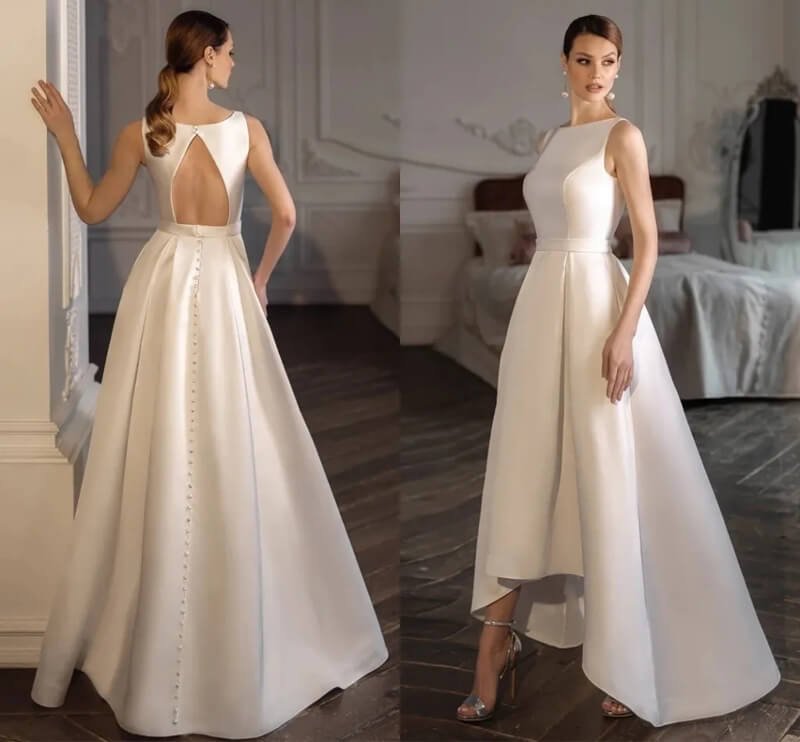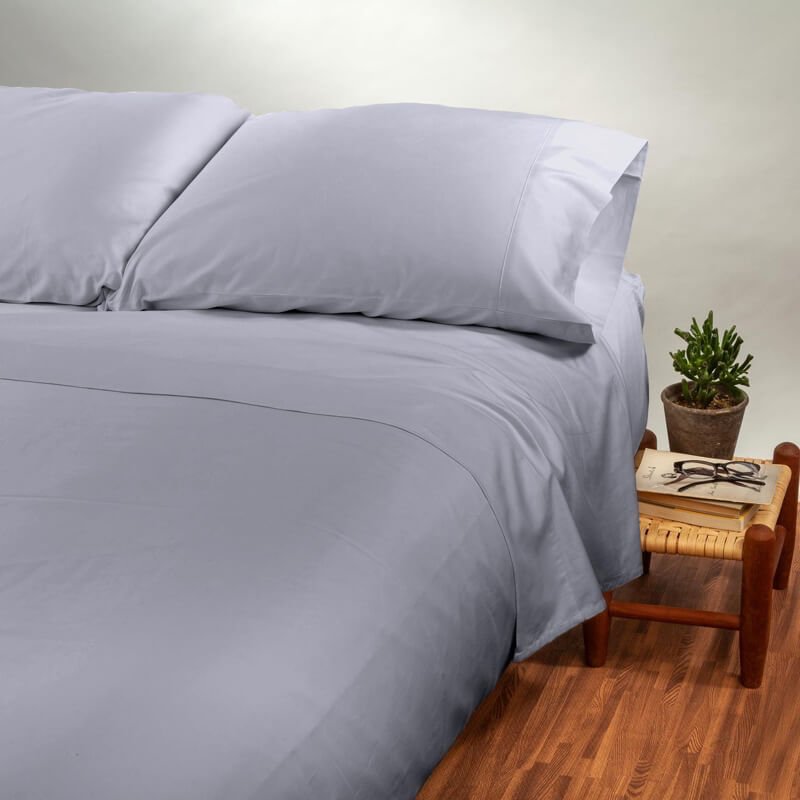Sateen vs Satin: What’s the Difference? Weave, Feel and Use
Satin and sateen – two fabrics often confused, yet distinctly different. Are you shopping for bedding or clothing and struggling to decide between these options? Choosing the wrong fabric can lead to disappointment: sheets that are too hot, a garment that snags easily, or simply doesn’t have the right look and feel. Understanding the nuances of satin and sateen is crucial for making an informed purchase.
This comprehensive guide unravels the mystery, clarifying the key differences between these two fabrics. You’ll learn about their unique weaves, fiber contents, and how these factors affect their appearance, texture, durability, and care. We’ll equip you with the knowledge to confidently choose satin or sateen based on your specific needs and preferences, ensuring you select the perfect fabric for your project or purchase, whether it’s luxurious bedding, elegant apparel, or stylish home decor.
1. Unraveling the satin vs. sateen mystery
The terms “satin” and “sateen” are often used interchangeably, leading to widespread confusion. It’s understandable – both fabrics are known for their characteristically smooth, somewhat shiny surface, making them popular choices for everything from bedding and clothing to linings and home decor.
However, despite their similar appearances, satin and sateen are distinct fabrics with different properties that significantly impact their feel, durability, care, and suitability for various applications. This guide aims to clarify those differences, providing a comprehensive comparison that will empower you to choose the right fabric with confidence, whether you’re selecting sheets for your bed, fabric for a new dress, or upholstery for your favorite armchair.

2. The key difference: It’s all in the weave
The most fundamental distinction between satin and sateen lies in their weave structure. It’s not necessarily the fiber content, but rather how the yarns are interlaced that defines each fabric. Understanding this foundational difference is key to grasping all the other characteristics that set them apart.
2.1 Satin: The warp-faced wonder
Satin is defined by its satin weave, which is classified as a warp-faced weave. To understand this, we need to define two key terms:
- Warp yarns: These are the yarns that run lengthwise on the loom, held taut in place. Imagine them as the vertical threads in a woven fabric.
- Weft yarns: These are the yarns that run crosswise on the loom, interlacing over and under the warp yarns. Think of them as the horizontal threads.
In a satin weave, the warp yarns “float” over multiple weft yarns before going under a single weft yarn. A very common satin weave pattern is four over, one under – meaning a warp yarn floats over four weft yarns, and then goes under one weft yarn. This pattern then repeats. This long “float” is what gives satin its characteristic smoothness and sheen.
Because a greater proportion of the warp yarns are visible on the surface, and these warp yarns are relatively uninterrupted, they reflect light more effectively. This creates the signature high-gloss, lustrous, shiny appearance of satin.
There are variations within the satin weave itself, often described by “harness” numbers:
- 4-harness satin: A basic satin weave, with a relatively short float.
- 5-harness satin: A slightly more lustrous and drapable satin, with a longer float.
- 8-harness satin: An even more lustrous and drapable satin, with an even longer float.
Generally, the higher the harness number, the more pronounced the sheen and the more fluid the drape of the fabric.
A helpful analogy: Think of satin like a waterfall. The warp yarns, like the water, cascade smoothly and uninterruptedly over the weft yarns, creating a continuous, reflective surface.
2.2 Sateen: The weft-faced comfort
Sateen, while sharing a similar underlying weave structure to satin, is fundamentally different because it is weft-faced. This means the weft yarns are the ones that “float” over multiple warp yarns.
Just like satin, a common sateen weave pattern is four over, one under. However, in sateen, it’s the weft yarn that floats over four warp yarns, and then goes under one warp yarn.
This seemingly minor difference – which yarns are doing the floating – has a major impact on the fabric’s properties. Because the weft yarns are more prominent on the surface, sateen has a softer, slightly less lustrous surface than satin. The floats are still there, creating smoothness, but the light reflection is more diffused, resulting in a more matte appearance and a subtle sheen, rather than a high gloss.
A helpful analogy: Think of sateen like a cozy blanket. The weft yarns, like the soft fibers of the blanket, create a slightly more textured and inviting surface, rather than the slick, reflective surface of satin.
3. Fiber content: Beyond the weave
While the weave defines whether a fabric is satin or sateen, the fiber content can vary considerably, and this fiber content significantly impacts the fabric’s overall properties, including its feel, drape, durability, breathability, and care requirements.
3.1 Satin’s filament family
Satin is traditionally, and ideally, made with filament fibers. These are long, continuous strands of fiber. Think of a single strand of silk, which can be incredibly long, sometimes extending for hundreds of meters. This continuous nature is key to satin’s smoothness.
Silk is the quintessential, and arguably the most luxurious, fiber used for making satin. Silk satin is prized for its incredible smoothness, beautiful sheen, elegant drape, breathability, and strength. However, silk satin is also delicate, expensive, and requires special care, often needing hand-washing or dry cleaning.
Because of silk’s cost and delicate nature, satin is also frequently made from synthetic filament fibers:
- Polyester: A very common and versatile synthetic fiber. Polyester satin is durable, more resistant to wear and tear than silk, wrinkle-resistant, affordable, and easy to care for, but is less breathable.
- Nylon: Another strong and resilient synthetic fiber, often used in blends with other fibers. Nylon satin shares many of the properties of polyester satin.
- Rayon: A semi-synthetic fiber made from cellulose. Rayon satin can offer good drape and a beautiful sheen, but is less durable than polyester or nylon and more prone to wrinkling.
The use of filament fibers, regardless of whether they are natural or synthetic, is a defining characteristic of satin and contributes significantly to its smooth, sleek surface and its ability to reflect light so brilliantly.
3.2 Sateen’s spun yarn story
Sateen, in contrast to satin, is typically made with spun yarns. These are made from short fibers that are twisted together to form a continuous yarn. Think of cotton, where the individual fibers are relatively short.
Cotton is by far the most common fiber used for making sateen. It’s the cotton content that gives sateen its characteristic softness, comfort, and breathability. However, sateen can also be made from Rayon, which provides a smoother surface and a good drape, or blends of cotton with other fibers like polyester or rayon to combine their benefits.
The quality of the cotton used in sateen is a crucial factor in determining the fabric’s overall quality and feel. Just like there are different grades of coffee beans, there are different grades of cotton:
- Short-staple cotton: Has shorter fibers, resulting in a slightly rougher and less durable fabric.
- Long-staple cotton: Has longer fibers, creating a smoother, stronger, and more luxurious sateen.
- Extra-long-staple cotton: The highest quality cotton, with the longest fibers, which produces the softest, most durable, and most luxurious sateen.
Two specific types of extra-long-staple cotton are often used for high-quality sateen:
- Egyptian cotton: Grown in Egypt, this cotton is renowned for its extra-long, fine fibers, resulting in exceptionally soft, smooth, and durable sateen.
- Pima cotton: Grown primarily in the United States, Pima cotton is another type of extra-long-staple cotton, also prized for its softness, strength, and luster.
Many cotton sateens are also mercerized. This is a treatment process that involves exposing the cotton fibers to a caustic solution under tension. This process strengthens the fibers, increases luster, and improves dye uptake, allowing the fabric to absorb dye more readily for richer, more vibrant colors.

4. Comparing characteristics: A head-to-head showdown
Now that we’ve explored the weave structure and fiber content of satin and sateen, let’s directly compare their key characteristics:
| Feature | Satin | Sateen |
| Weave | Warp-faced (warp yarns float over weft yarns) | Weft-faced (weft yarns float over warp yarns) |
| Fiber | Typically filament fibers (silk, polyester, nylon, rayon) | Typically spun yarns (cotton, rayon, blends) |
| Sheen | High gloss, very shiny, reflects light intensely | Subtle luster, more matte compared to satin, has a soft glow |
| Texture | Very smooth, slick, silky to the touch | Softer, slightly more textured than satin, often described as cozy or warm |
| Drape | Excellent, fluid drape; flows and hangs beautifully | Good drape, but less fluid and more structured than satin; holds its shape better |
| Durability | More delicate, prone to snagging and pulling; synthetic satins are generally more durable | More durable and resistant to wear and tear than satin, making it suitable for everyday use |
| Breathability | Depends on the fiber. Silk is breathable. Synthetics can trap heat. | Generally good, especially 100% cotton sateen. |
| Wrinkle Resistance | Moderate wrinkle resistance. | Good wrinkle resistance. |
| Care | Often requires delicate care. Silk may require dry cleaning or hand-washing. | Generally easier to care for. Most cotton sateens can be machine-washed. |
| Cost | Silk satin is expensive. Synthetic satins are generally more affordable. | Cotton sateen is typically priced in the mid-range. |
| Uses | Formal wear, evening gowns, lingerie, linings, luxurious bedding. | Bedding, drapes, upholstery, casual clothing. |
| Dyeing & Printing | Dyeing and printing results vary by material. | Generally easy to dye and print. |
4.1 Sheen and luster
- Satin: The defining characteristic of satin is its high-gloss finish. The warp-faced weave and the use of filament fibers create a surface that reflects light intensely, resulting in a very shiny or glossy appearance.
- Sateen: Sateen has a more subdued, matte luster. While it does have a sheen, it’s much less pronounced than satin’s. The weft-faced weave and the use of spun yarns diffuse the light more, creating a softer glow rather than a bright shine.
4.2 Texture and feel
- Satin: Satin is incredibly smooth and slick to the touch. It has a characteristic silky feel, even when made from synthetic fibers like polyester. This smoothness is due to the long, uninterrupted floats of the warp yarns and the use of filament fibers.
- Sateen: Sateen has a softer, slightly more textured feel than satin. While it’s still smooth, it doesn’t have the same slickness as satin. The spun yarns and the weft-faced weave create a surface that feels cozier and warmer to the touch.
4.3 Drape and flow
- Satin: Satin is renowned for its elegant and fluid drape. The long floats and filament fibers allow the fabric to flow and hang beautifully, making it a favorite for garments that require graceful movement, such as evening gowns, bridal gowns, and flowing skirts.
- Sateen: Sateen has a good drape, but it’s less fluid and more structured than satin. It holds its shape a bit better, making it suitable for garments where a slightly more tailored look is desired, such as some skirts, shirts, or structured dresses. Cotton sateen, in particular, can still have a very pleasing drape.

4.4 Durability: Snags vs. strength
- Satin: The very characteristic that gives satin its beauty – its smooth, uninterrupted surface – also makes it more delicate and prone to snagging and pulls. The long floats of the warp yarns can easily catch on sharp objects. Silk satin is particularly delicate, while synthetic satins are generally more durable.
- Sateen: Sateen is generally more durable and resistant to wear and tear than satin. The weft-faced weave and the use of spun yarns create a tighter, more robust fabric that can better withstand everyday use. This makes it a more practical choice for items that will see more frequent washing and handling.
4.5 Breathability and temperature regulation
- Satin: Its breathability depends heavily on the fiber. Silk satin is naturally breathable and temperature-regulating, while synthetic satins like polyester and nylon can trap heat and moisture.
- Sateen: Cotton sateen is generally more breathable than synthetic satin because cotton is a naturally breathable fiber. However, its tighter weave can make it slightly warmer than some other cotton weaves.
4.6 Wrinkle resistance
- Satin: Offers moderate wrinkle resistance.
- Sateen: Is more wrinkle-resistant.
4.7 Care and maintenance: Wash and wear
- Satin: Often requires more delicate care than sateen. Silk satin may require dry cleaning or very careful hand-washing in cold water with a gentle detergent. It should be air-dried flat or hung to dry, away from direct sunlight or heat. Synthetic satins are generally easier to care for, and many are machine-washable on a delicate cycle with cold water.
- Sateen: Is generally easier to care for than satin. Most cotton sateens are machine-washable and dryable, making them a practical choice for everyday items. However, it’s still recommended to wash them in cool or warm water and to tumble dry on low or medium heat to prevent shrinkage and maintain the fabric’s softness.
4.8 Cost
- Satin: Silk satin is expensive, while synthetic satin is cheaper.
- Sateen: Cotton sateen is in the middle price range.
4.9 Common uses: Bedding, clothing, and beyond
- Satin: Its luxurious sheen, elegant drape, and smooth feel make it a popular choice for formal wear like evening gowns, lingerie, linings for jackets and coats, upholstery, and luxury bedding.
- Sateen: Its softness, durability, breathability, and easier care make it a favorite for bedding like sheets and duvet covers, drapes and curtains, durable upholstery, and casual clothing like shirts, blouses, and dresses.
4.10 Dyeing and printing
- Satin: The ability to dye satin well depends on its fiber content.
- Sateen: Is generally easier to dye and print.
4.11 Sewing with satin and sateen
Both satin and sateen can present some challenges for sewers due to their slippery nature, with satin generally being considered more difficult to work with than sateen. Here are some tips for sewing with these fabrics:
- Needle: Use a sharp, fine needle, such as a Microtex needle. These needles have a very sharp point that pierces the fabric cleanly, preventing snags and runs.
- Thread: Choose a high-quality thread that matches the fiber content of your fabric, such as silk thread for silk satin, cotton thread for cotton sateen, or polyester thread for synthetic satins.
- Cutting: Cut fabric on a flat surface, using sharp fabric shears or a rotary cutter with a new blade. Consider using pattern weights instead of pins to hold the pattern in place without damaging the fabric.
- Pinning: If you must use pins, pin generously within the seam allowance to prevent the fabric from shifting. Consider using fine, sharp pins, such as silk pins, to minimize the risk of creating holes or snags.
- Stabilizer: For sateen, consider using a lightweight, sew-in stabilizer along seams to prevent stretching or distortion, especially when working with curves or bias-cut edges.
- Machine settings: Lower the top tension slightly, use a shorter stitch length, and test your settings on a scrap of fabric before sewing your actual project to fine-tune the settings for the best results.
- Finishing edges: Both satin and sateen are prone to fraying, so it’s essential to finish the seam edges to prevent unraveling. You can use a serger, a zigzag stitch on your sewing machine, or apply a fray-retardant product to the raw edges.
5. Choosing the right fabric: Satin or sateen?
The best choice between satin and sateen ultimately depends on your priorities and the intended use of the fabric. There’s no single “better” fabric; each has its own strengths and weaknesses.
5.1 Bedding bliss: Sateen for comfort, satin for luxury
For everyday bedding, sateen is often the more practical and popular choice. Its 100% cotton construction offers several advantages like softness, breathability, durability, and easy care, making it convenient for daily use.
Satin, particularly if made from silk, can be a luxurious option for bedding. It offers an exceptionally smooth feel and a beautiful sheen. However, it is also more expensive and delicate. Therefore, while satin can add a touch of glamour to the bedroom, sateen is generally recommended for everyday bedding due to its combination of comfort, durability, breathability, and ease of care.

5.2 Apparel applications: Satin for glamour, sateen for versatility
For apparel, the choice between satin and sateen depends on the desired look, feel, and level of formality.
Satin is the go-to choice for garments where glamour, drape, and a high-gloss finish are desired. This makes it perfect for formal wear, lingerie, and luxurious linings.
Sateen offers greater versatility for apparel. It can be used for a wide range of garments, from casual to more dressy, due to its softer feel, greater durability, and easier care. It’s a good choice for shirts, blouses, skirts, and dresses.
5.3 Home decor decisions: Considering use and style
Both satin and sateen can be used in home decor applications, such as upholstery and curtains/drapes.
Sateen is generally the more practical choice for high-use upholstery due to its greater durability and resistance to wear and tear. It can withstand the daily rigors of family life better than satin.
Satin can add a touch of elegance and glamour to upholstery or drapes, particularly in more formal settings. However, it’s important to consider that satin is more delicate and prone to snagging, so it may not be the best choice for furniture that receives heavy use or is exposed to pets or children.
6. FAQs about sateen and satin
6.1 Can sateen be made of silk?
Technically, no. The term “sateen” refers to a weft-faced weave typically made with spun yarns, like cotton or rayon. If a fabric is made with silk and has a satin weave, it’s still considered a type of satin, not sateen. This is a frequent point of confusion, as the underlying weave structure might be similar, but the fiber type dictates the name.
6.2 Is sateen warmer than satin?
Generally, yes. Cotton sateen tends to be warmer than synthetic satin because its spun yarns trap more air, providing better insulation, and because cotton itself is a naturally insulating fiber. However, silk satin can also be relatively warm, depending on its weight and thickness, as silk is a naturally temperature-regulating fiber that can provide warmth in cooler conditions.
6.3 Which fabric is better for sensitive skin?
Cotton sateen is often recommended for sensitive skin due to its softness, breathability, and natural fibers, which are less likely to cause allergic reactions compared to some synthetic fibers. Synthetic satins, while smooth, can sometimes irritate sensitive skin, particularly if they are not very breathable.
6.4 How can I tell the difference between sateen and satin just by looking?
The easiest way to distinguish between sateen and satin is by their sheen and touch. Satin has a much more noticeable shine or gloss and will feel slicker and smoother. Sateen has a more subtle luster or sheen, appearing more matte in comparison, and will feel softer and slightly more textured.
6.5 Do I need to iron sateen sheets?
Sateen is relatively wrinkle-resistant, so ironing sateen sheets is often not strictly necessary, particularly if you remove them from the dryer promptly. However, it depends on your personal preference. If you prefer a perfectly crisp, wrinkle-free look, you can iron sateen sheets on a low to medium heat setting.
7. Packlove- Providing service for clothing labels
Packlove specializes in providing high-quality, custom labels, tags, zipper bags, and poly mailers for clothing brands. With over 8 years of experience in the garment industry, particularly in processing labels and tags, we understand the importance of every detail, from selecting high quality fabric to create clothing to the labels you attach.
Visit Packlove to explore our services and contact us for a quote or consultation.
Read more:
Satin and sateen, while sharing a similar weave structure that gives them both a smooth, slightly lustrous surface, are distinct fabrics with different characteristics. The key differences lie in their fiber content and the direction of the weave.
These fundamental differences result in variations in sheen, texture, drape, durability, breathability, care requirements, and best uses. There is no single “better” fabric; the best choice between satin and sateen depends entirely on individual needs, preferences, and the intended use of the fabric.
Consider all factors – sheen, texture, drape, durability, breathability, care, and cost – before making a decision. By understanding the unique properties of each fabric, you can confidently select the perfect material for your project, whether it’s luxurious bedding, elegant apparel, or stylish home decor.






















